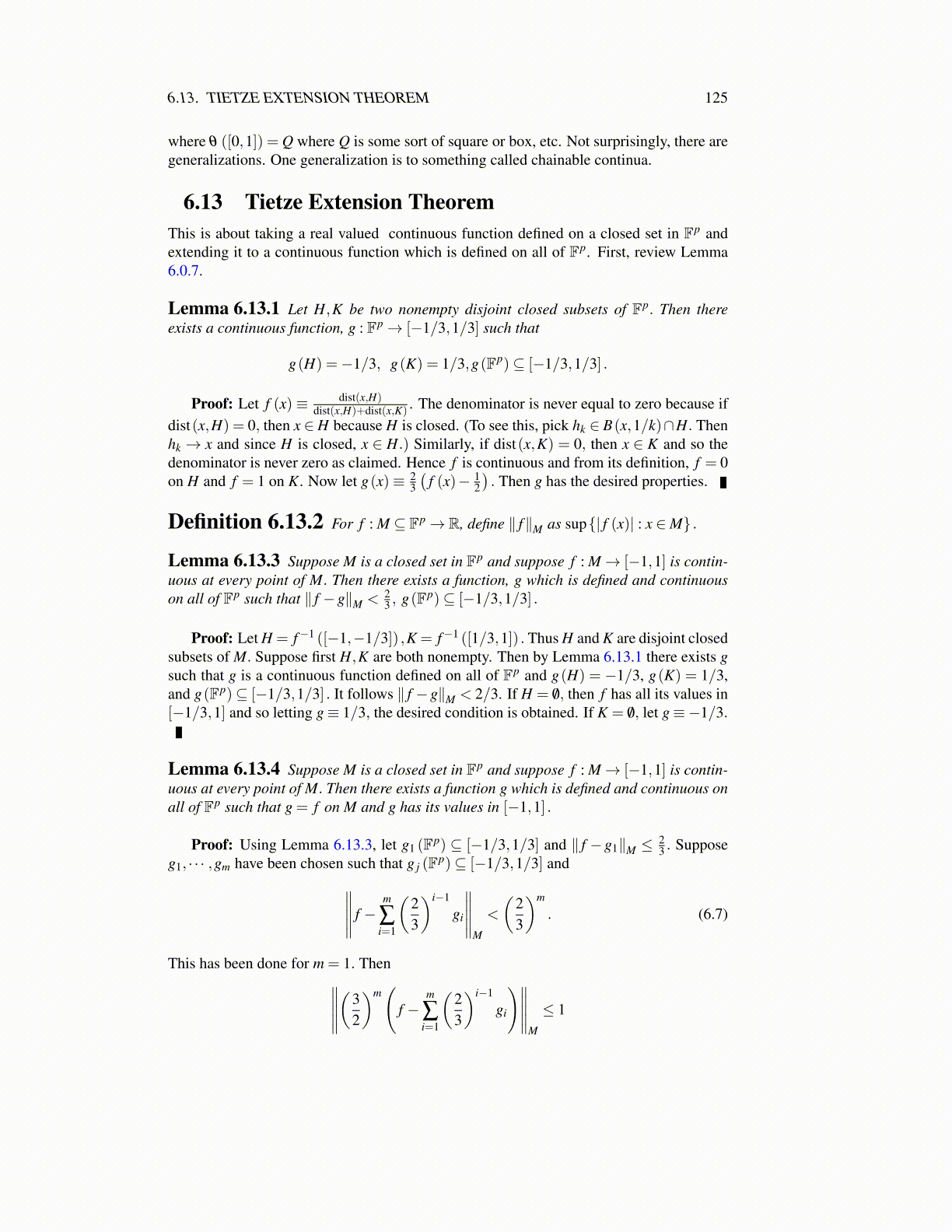
6.14. EXERCISES 125
5. Show for every x,y real, ∑∞k=0
(x+y)k
k! converges and is(
∑∞k=0
yk
k!
)(∑
∞k=0
xk
k!
).
6. Consider the series ∑∞n=0 (−1)n x2n+1
(2n+1)! . Show this series converges uniformly on anyinterval of the form [−M,M] .
7. Formulate a theorem for a series of functions which will allow you to conclude theinfinite series is uniformly continuous based on reasonable assumptions about thefunctions in the sum.
8. Find an example of a sequence of continuous functions such that each function isnonnegative and each function has a maximum value equal to 1 but the sequence offunctions converges to 0 pointwise on (0,∞) .
9. Suppose { fn} is a sequence of real valued functions which converges uniformly to acontinuous function f . Can it be concluded the functions fn are continuous? Explain.
10. Let h(x) be a bounded continuous function. Show the function f (x) = ∑∞n=1
h(nx)n2 is
continuous.
11. Let S be a any countable subset of R. Show there exists a function f defined on Rwhich is discontinuous at every point of S but continuous everywhere else. Hint:This is real easy if you do the right thing. It involves Theorem 6.9.15 and the Weier-strass M test.
12. By Theorem 6.10.3 there exists a sequence of polynomials converging uniformly tof (x) = |x| on the interval [−1,1] . Show there exists a sequence of polynomials, {pn}converging uniformly to f on [−1,1] which has the additional property that for alln, pn (0) = 0.
13. If f is any continuous function defined on [a,b] , show there exists a series of the form∑
∞k=1 pk, where each pk is a polynomial, which converges uniformly to f on [a,b].
Hint: You should use the Weierstrass approximation theorem to obtain a sequenceof polynomials. Then arrange it so the limit of this sequence is an infinite sum.
14. Sometimes a series may converge uniformly without the Weierstrass M test beingapplicable. Show ∑
∞n=1 (−1)n x2+n
n2 converges uniformly on [0,1] but does not con-verge absolutely for any x ∈R. To do this, it might help to use the partial summationformula, 5.6.
15. Suppose you have a collection of functions S⊆C ([0,T ]) which satisfy
maxx∈[0,T ]
| f (x)|< M, sup0≤x<y≤T
| f (x)− f (y)||x− y|γ
< K
where γ ≤ 1. Show there is a uniformly convergent subsequence of S which con-verges uniformly to some continuous function. The second condition on f is calleda Holder condition and such functions are said to be Holder continuous. These func-tions are denoted as C0,γ ([0,T ]) and this little problem shows that the embedding ofC0,γ ([0,T ]) into C ([0,T ]) is compact.